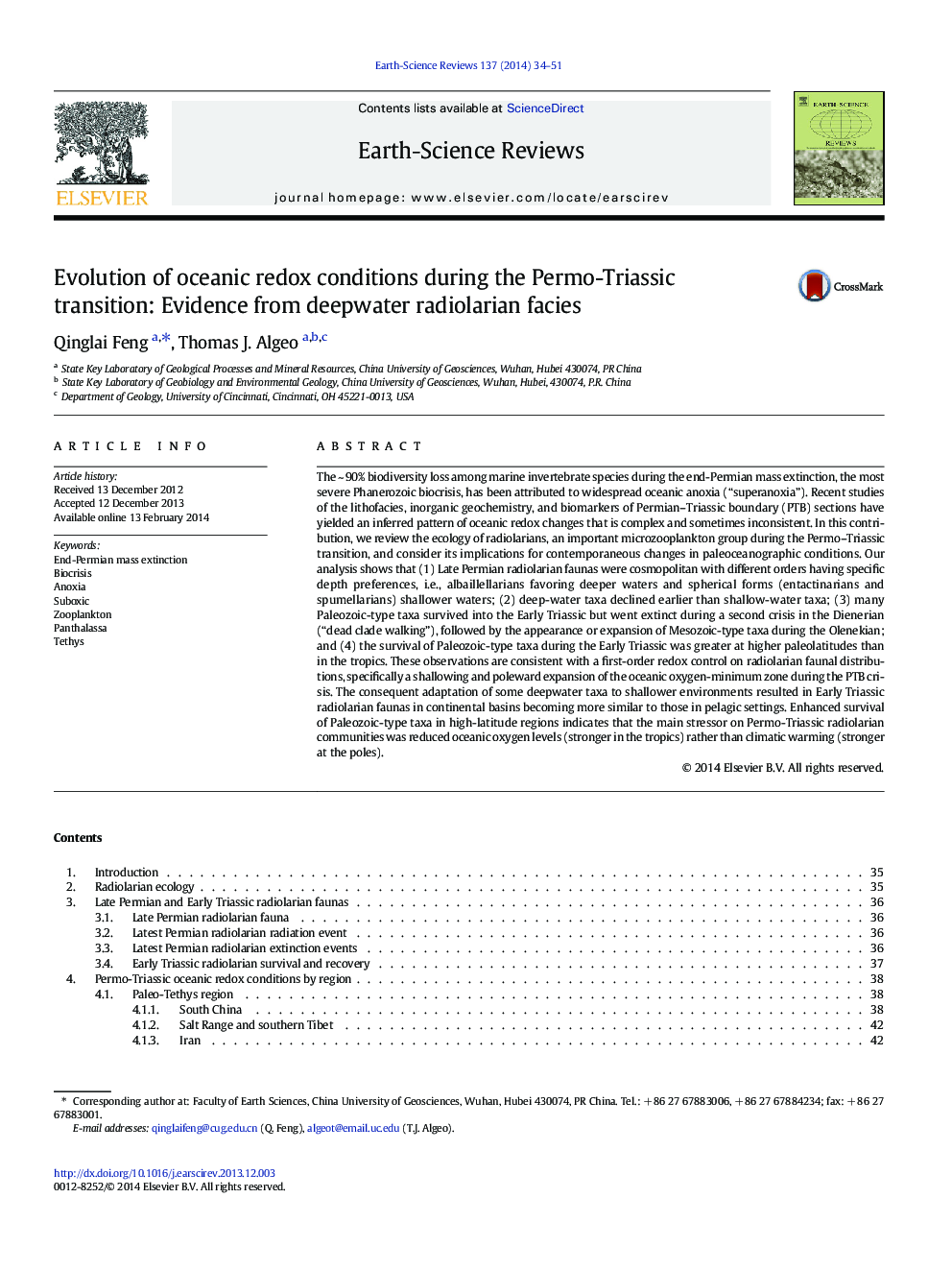| کد مقاله | کد نشریه | سال انتشار | مقاله انگلیسی | نسخه تمام متن |
|---|---|---|---|---|
| 4725721 | 1639965 | 2014 | 18 صفحه PDF | دانلود رایگان |
The ~ 90% biodiversity loss among marine invertebrate species during the end-Permian mass extinction, the most severe Phanerozoic biocrisis, has been attributed to widespread oceanic anoxia (“superanoxia”). Recent studies of the lithofacies, inorganic geochemistry, and biomarkers of Permian–Triassic boundary (PTB) sections have yielded an inferred pattern of oceanic redox changes that is complex and sometimes inconsistent. In this contribution, we review the ecology of radiolarians, an important microzooplankton group during the Permo–Triassic transition, and consider its implications for contemporaneous changes in paleoceanographic conditions. Our analysis shows that (1) Late Permian radiolarian faunas were cosmopolitan with different orders having specific depth preferences, i.e., albaillellarians favoring deeper waters and spherical forms (entactinarians and spumellarians) shallower waters; (2) deep-water taxa declined earlier than shallow-water taxa; (3) many Paleozoic-type taxa survived into the Early Triassic but went extinct during a second crisis in the Dienerian (“dead clade walking”), followed by the appearance or expansion of Mesozoic-type taxa during the Olenekian; and (4) the survival of Paleozoic-type taxa during the Early Triassic was greater at higher paleolatitudes than in the tropics. These observations are consistent with a first-order redox control on radiolarian faunal distributions, specifically a shallowing and poleward expansion of the oceanic oxygen-minimum zone during the PTB crisis. The consequent adaptation of some deepwater taxa to shallower environments resulted in Early Triassic radiolarian faunas in continental basins becoming more similar to those in pelagic settings. Enhanced survival of Paleozoic-type taxa in high-latitude regions indicates that the main stressor on Permo-Triassic radiolarian communities was reduced oceanic oxygen levels (stronger in the tropics) rather than climatic warming (stronger at the poles).
Journal: Earth-Science Reviews - Volume 137, October 2014, Pages 34–51
